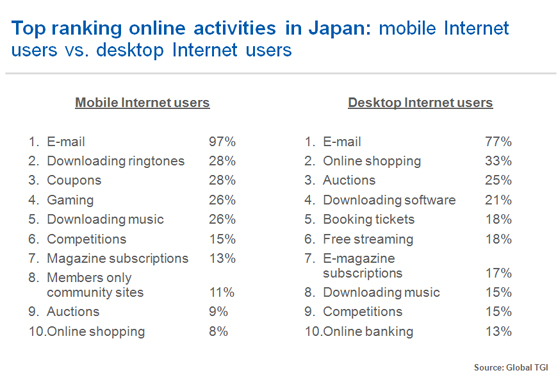 Latest estimates suggest that there are now more than five billion mobile phone connections worldwide, with industry analysts predicting six billion connections by the middle of 2012. This rapid growth means that the shift from desktop computing to mobile devices is already happening – with five billion phones, there are more than three times as many phones in existence as personal computers.
Latest estimates suggest that there are now more than five billion mobile phone connections worldwide, with industry analysts predicting six billion connections by the middle of 2012. This rapid growth means that the shift from desktop computing to mobile devices is already happening – with five billion phones, there are more than three times as many phones in existence as personal computers.
And this is truly a global phenomenon. In many developing economies, as a result of divergent incomes and limited infrastructure, it is likely that widespread use of PCs and landline telephones will be bypassed altogether, in favor of a move straight to mobile.
With five billion phones, there are more than three times as many phones in existence as personal computers.
With mobile devices increasingly becoming part of the fabric of society, touching every part of our lives, what are the implications for marketers and how can brands successfully transition to digital mobile media?
Home Internet and mobile Internet
Given that the mobile phone is a very different kind of device from the desktop computer, the way we use them will also be quite different. Unlike computers, mobile phones are portable, personal, always connected and always with us.
We can begin to predict the shape of the future by studying mobile use in the most sophisticated and networked markets. Whilst use of mobile-based Internet is seeing rapid growth globally, data from Global TGI, an international network of market and media research companies including Experian Simmons, show that Japan is still far ahead of the rest of the world.
Using mobile to deliver content
For marketers, one of the main advantages of using mobile as a communication channel is portable web access and the resulting ability to deliver content and offers to consumers on the move. Looking at the way in which Japanese consumers use the Internet via their mobile phones, the opportunity is clear. More than a quarter of mobile Internet users in Japan use their cell phone to obtain coupons and 15% use them for competitions and promotions. Thirty-seven percent of the handsets owned by Japanese consumers are GPS enabled, suggesting great potential for marketers to leverage location-based messaging.
Mobile Internet users are more connected…
Mobile Internet users also tend to spend longer than average online. In South Korea, where 97% of the population owns at least one mobile device, almost half of mobile Internet users typically spend more than two hours online each day, compared with a quarter of Internet users in general.
Additionally, mobile Internet users in South Korea see the Internet as central to the way they live. They are highly likely to say that “the Internet is an important part of my life” and that “I make friends through the Internet”.
…and more receptive towards all types of advertising
As the use of smartphones develops, mobile is clearly a fast-growing opportunity for marketers. But a significant challenge is to determine where this platform fits within an integrated communications strategy. Encouragingly, mobile Internet users are more likely than average to react positively towards all kinds of advertising. Data from Global TGI show the mobile web users in Western Europe are more likely than their average countrymen to notice both advertising and product placement in traditional channels such as TV and radio. Likewise, in the U.S., mobile Internet users are more likely to notice outdoor advertising such as billboards and ads on public transport.
So with the right strategy in place, it should certainly be possible for mobile communications to comfortably co-exist with and complement other media channels.
With the right strategy in place, it is possible for mobile communications to co-exist with other media channels.
Learn more about how Experian Simmons and Global TGI can provide you with consumer insights across the globe with comparisons to the United States.


